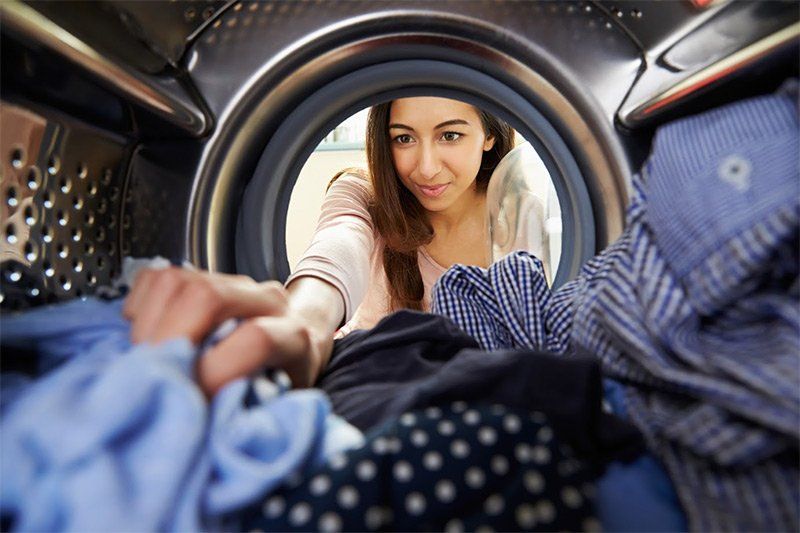A Primer for Washing Laundry in Your Septic System
Homeowners
who are new to septic systems are frequently uncertain how to care
for their septic system or the adjustments they need to make to their
normal routines. When you have a septic system, how you wash laundry
is one of those changes. Here is what you should know about doing
laundry with a septic system.
Understand the Differences Between Potable, Blackwater, and Gray Water
Potable water — sometimes called clear water — is the clean water coming into your home that you use for drinking, cooking, bathing, and doing laundry. Blackwater is the wastewater from your toilet and kitchen sink. If you use your washing machine to launder dirty diapers, this is also blackwater. Gray water is "used" water that has come into contact with humans via the tub, shower, washing machine, and general-use sinks.
In some states, codes allow diverting gray water from the washing machine and using it for other purposes, such as watering non-edible plants. However, in Florida, gray water can only be used by homeowners to flush the toilet. This use requires an addition to a regular septic system to meet code.
It is important to understand these terms because the more wastewater that enters your septic system, the more your system is taxed. Nearly 22 percent of a home's gray water usage is from the washing machine, so using the machine correctly can help protect your septic system.
Spread Out Your Loads of Laundry Over the Week
You may be accustomed to having a laundry day on which you do all your dirty laundry at once, such as on the weekend. But because a septic system partially works by allowing the wastewater to slowly seep into the ground to help filter and purify it, too much laundry at once can cause issues.
A washing machine uses a lot of water. Overdoing it can cause plumbing problems, sewage backups, flooding, and ground contamination. Depending on the size of your family, you may need to do 1 or 2 loads of laundry each day to keep up and prevent your system from being taxed.
Buy a High Efficiency Washing Machine
You can reduce the amount of gray water that enters your septic system by using a washing machine that is more efficient than your current washing machine. Modern high efficiency washing machines use only about 15 gallons of water . In contrast, standard washing machines use far more water — 30 to 40 gallons!
Not only will you save water as well as electricity, you will put less stress on your septic system. Additionally, if you only have a small load of laundry, be sure to adjust the load size on your washing machine to conserve water and reduce what you add to your septic system.
Use the Right Kind and Amount of Laundry Detergent
Most people love a bargain, but economy laundry detergents, especially powdered detergents, contain added filler, which is typically clay. This can cause troubles in your septic system. It is best to use a quality liquid laundry detergent that is specifically deemed safe for septic systems by manufacturers. Don't use more than the recommended amount of detergent.
Don't Use Too Much Bleach
It's okay to use bleach occasionally in typical household amounts. For example, washing a load of whites with bleach each week shouldn't cause an issue in a healthy septic system. Just be careful not to overdo it, as you could upset the bacteria balance.
If you are a homeowner new to septic systems, contact us today. We can offer additional laundry tips, information on how to best protect your septic system, and set you up on a regular maintenance schedule.








